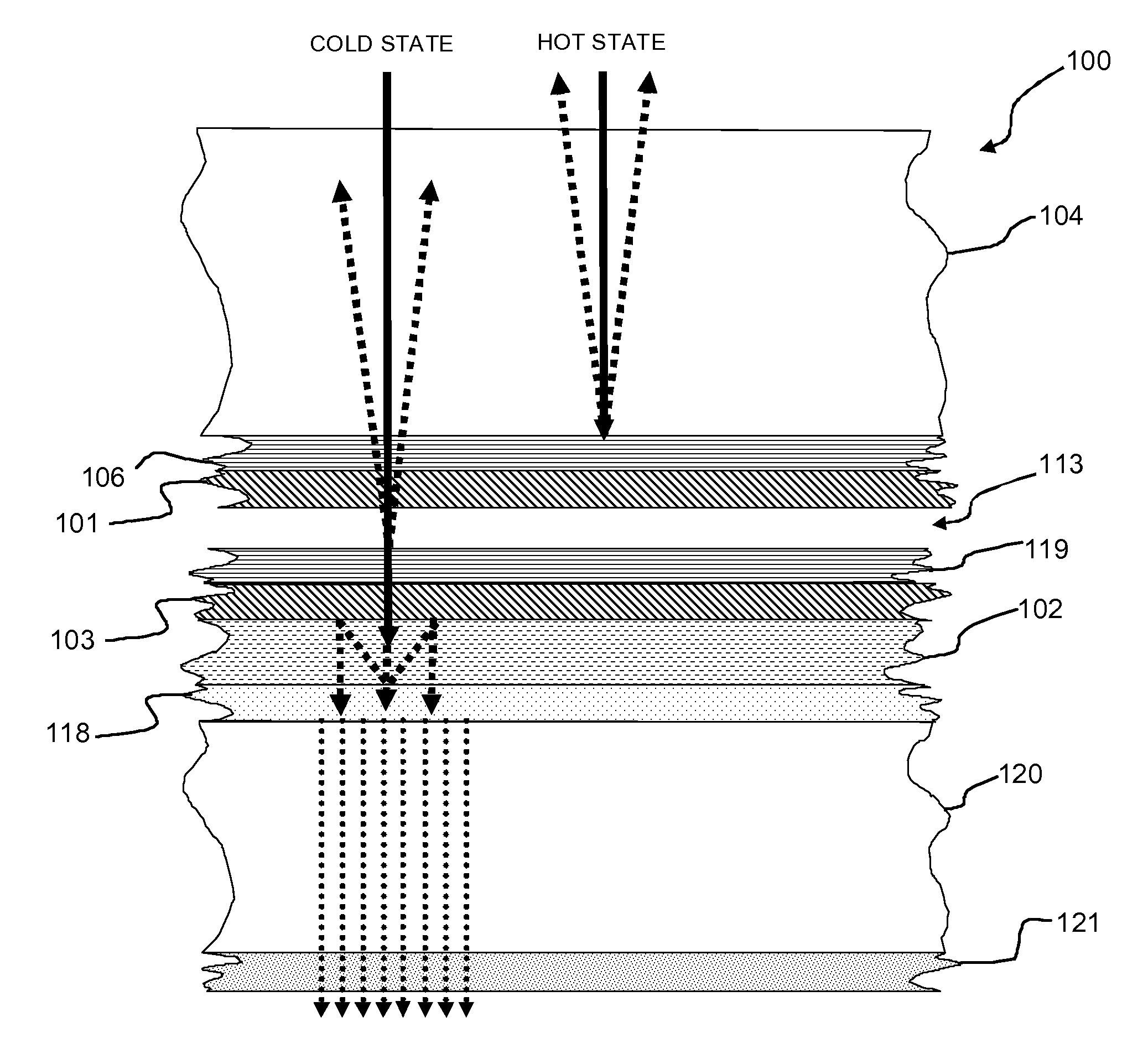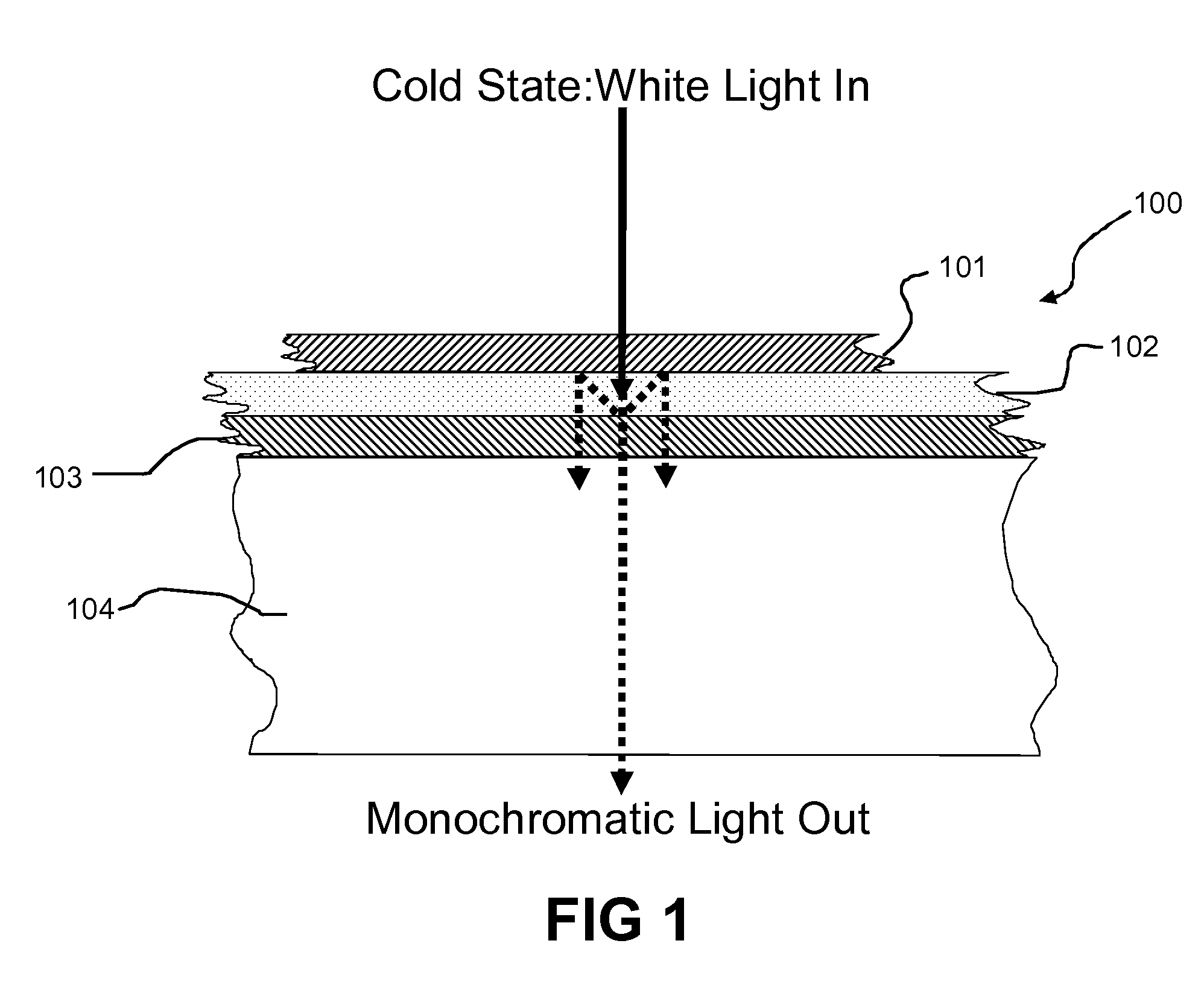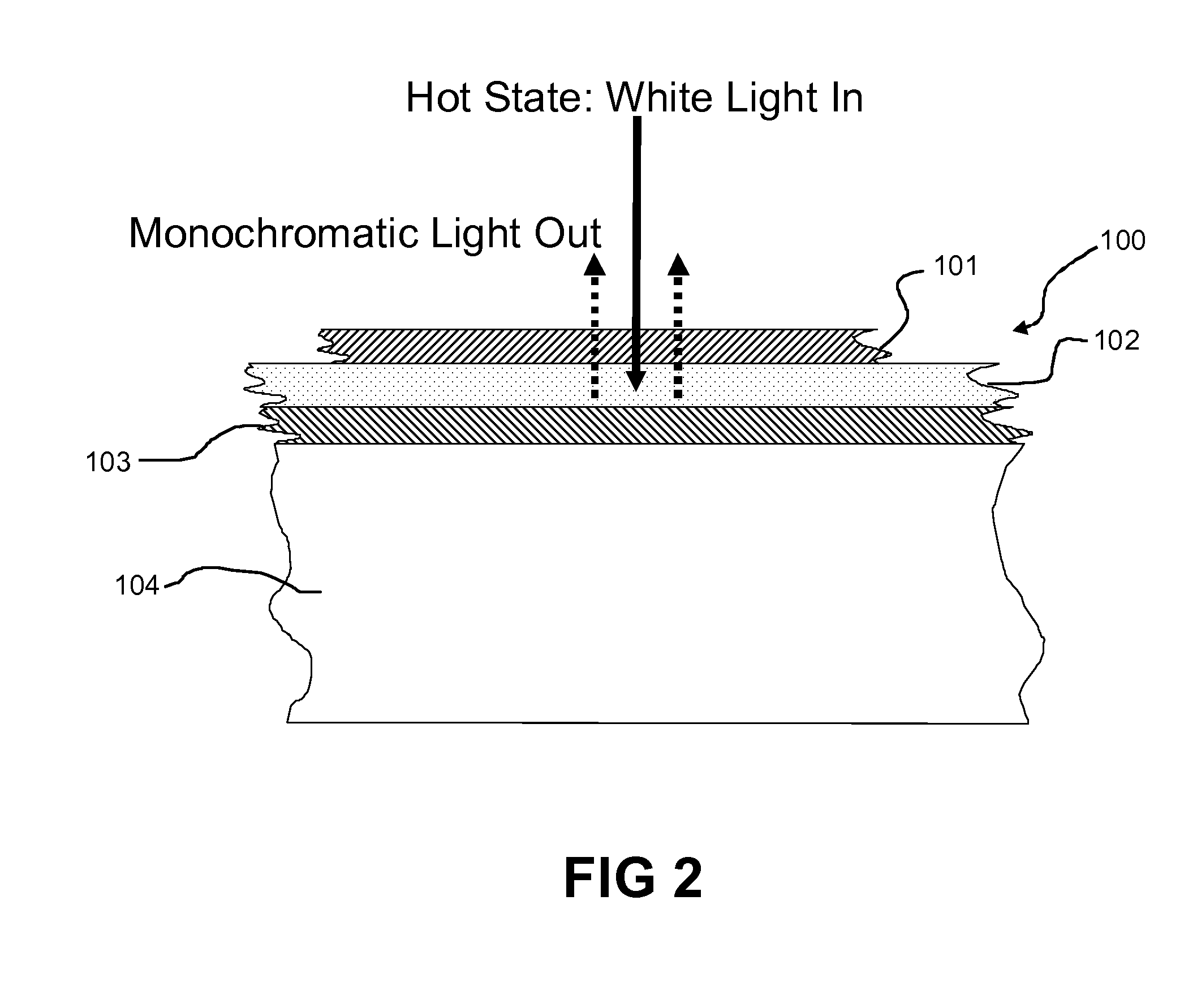Thermally switched optical downconverting filter
a technology of optical downconverting filter and thermal switching, which is applied in the direction of instruments, nuclear elements, lighting and heating apparatus, etc., can solve the problems of limited utility in temperature-regulating applications, significant limits on the ability of temperature regulation, and only comparatively recent understanding of the physics of these materials
- Summary
- Abstract
- Description
- Claims
- Application Information
AI Technical Summary
Benefits of technology
Problems solved by technology
Method used
Image
Examples
Embodiment Construction
[0043]The disclosed technology is directed to the use of a thermochromic optical downconverter, in conjunction with one or more bandblock filters, to create a thermally switched optical downconverting filter (TSOD filter) that allows light energy to pass through at low ambient temperatures and reflects or radiates it away at high ambient temperatures. The technology is well suited for use in building materials such as spandrels, windows, and siding to passively regulate the heating and cooling of a building or other structure. For example, in the winter when the ambient air temperature is cold, building materials incorporating a TSOD filter can pass the majority of the solar energy from incident sunlight into the interior of the building to passively heat the building. Likewise, in the summer when the ambient air temperature is hot, building materials incorporating a TSOD filter can block the majority of the solar energy from incident sunlight from passing into the interior of the b...
PUM
| Property | Measurement | Unit |
|---|---|---|
| wavelength | aaaaa | aaaaa |
| wavelengths | aaaaa | aaaaa |
| wavelengths | aaaaa | aaaaa |
Abstract
Description
Claims
Application Information
 Login to View More
Login to View More - R&D
- Intellectual Property
- Life Sciences
- Materials
- Tech Scout
- Unparalleled Data Quality
- Higher Quality Content
- 60% Fewer Hallucinations
Browse by: Latest US Patents, China's latest patents, Technical Efficacy Thesaurus, Application Domain, Technology Topic, Popular Technical Reports.
© 2025 PatSnap. All rights reserved.Legal|Privacy policy|Modern Slavery Act Transparency Statement|Sitemap|About US| Contact US: help@patsnap.com



